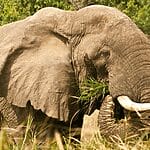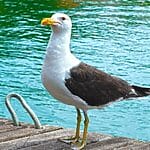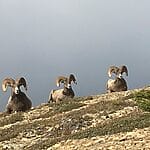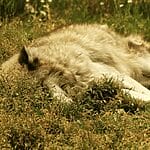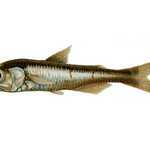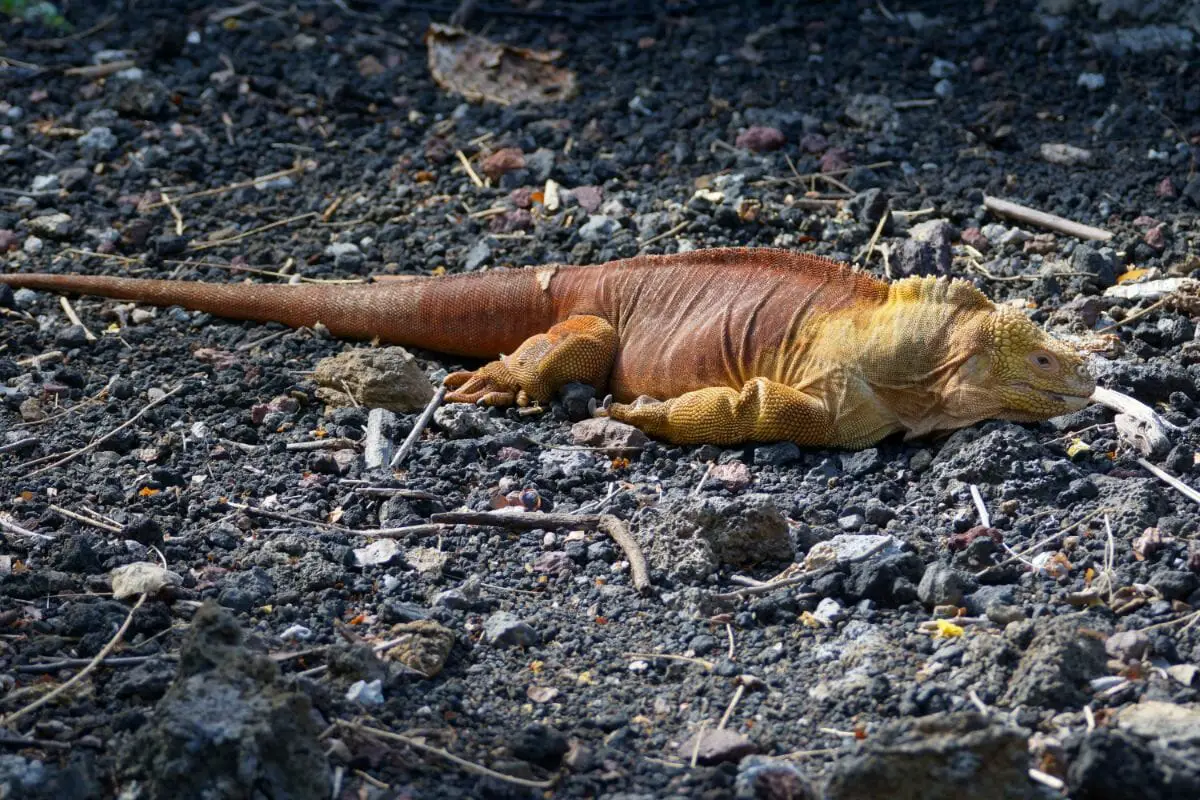
Galápagos Land Iguanas
Contents show
Volcanic Giant Tube Worms
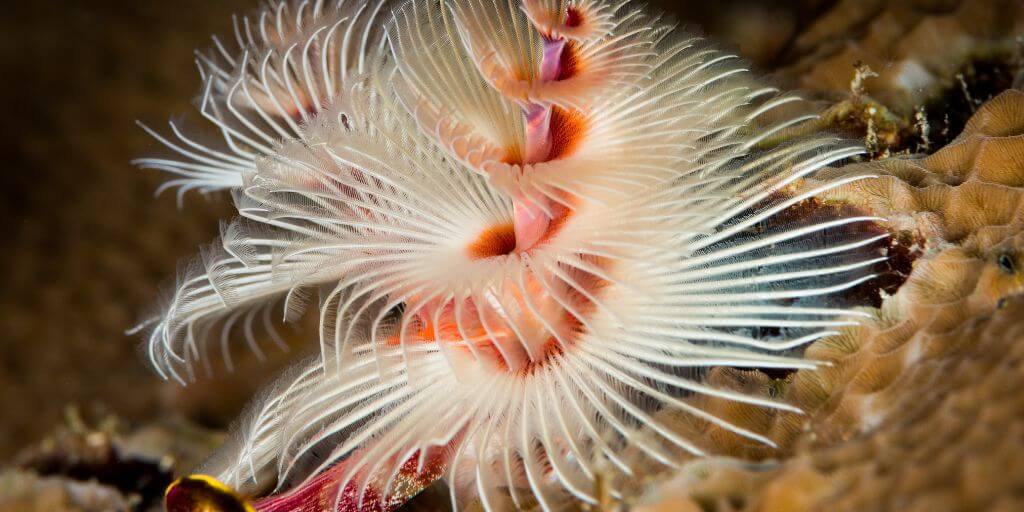 These volcanic giant tube worms, akin to the Loihi shrimp, could be deemed one of the most bizarre creatures thriving on this planet, yet they also survive one of the harshest environments – near active underwater volcanoes.The tube worm is an invertebrate marine worm that, over the years, has adapted to be able to live in underwater volcanoes.These underwater volcanoes produce hydrogen sulfide, boiling ash, carbon dioxide, and methane – a combination of elements that would kill any other creature.However, due to some key adaptations, these creatures can live right next to these vents.These include extremely strong muscles and skin that can withstand these toxic elements.What sets these creatures apart from any other animal is how to absorb oxygen, which is simply that they don’t.Rather, they absorb the carbon dioxide from the underwater volcano to breathe.This is strange considering that these are animals, not vegetation or plants, and they use carbon dioxide to breathe.Little is still known about the animals. Having been discovered relatively recently in 1977, scientists have yet to study them extensively; how they age hasn’t even been discovered yet.What we do know is how fast they grow, which is a rate much faster than some other deep-sea animals, but this is it.Their body and lives are so vastly different from anything else we’ve seen before; that they could be considered alien.
These volcanic giant tube worms, akin to the Loihi shrimp, could be deemed one of the most bizarre creatures thriving on this planet, yet they also survive one of the harshest environments – near active underwater volcanoes.The tube worm is an invertebrate marine worm that, over the years, has adapted to be able to live in underwater volcanoes.These underwater volcanoes produce hydrogen sulfide, boiling ash, carbon dioxide, and methane – a combination of elements that would kill any other creature.However, due to some key adaptations, these creatures can live right next to these vents.These include extremely strong muscles and skin that can withstand these toxic elements.What sets these creatures apart from any other animal is how to absorb oxygen, which is simply that they don’t.Rather, they absorb the carbon dioxide from the underwater volcano to breathe.This is strange considering that these are animals, not vegetation or plants, and they use carbon dioxide to breathe.Little is still known about the animals. Having been discovered relatively recently in 1977, scientists have yet to study them extensively; how they age hasn’t even been discovered yet.What we do know is how fast they grow, which is a rate much faster than some other deep-sea animals, but this is it.Their body and lives are so vastly different from anything else we’ve seen before; that they could be considered alien.Lesser Flamingo
 Typically found in areas of India and the arid regions of Africa, lesser flamingos are also known to live around volcanoes.The reason for this is that flamingos tend to feed on a species of algae that is commonly found in alkaline lakes, with these lakes being found near sites of active volcanoes.As a result, these lakes are believed to be some of the toughest environments on the planet due to reaching temperatures of over 40 degrees Celsius and containing extremely concentrated levels of salt.Ever wondered why flamingos have long legs? Well, this is one of the reasons.Their long legs help protect their bodies from the hot water while still allowing them to feed.They also use their wings to fly away from any dangers which may occur such as volcanic eruptions.
Typically found in areas of India and the arid regions of Africa, lesser flamingos are also known to live around volcanoes.The reason for this is that flamingos tend to feed on a species of algae that is commonly found in alkaline lakes, with these lakes being found near sites of active volcanoes.As a result, these lakes are believed to be some of the toughest environments on the planet due to reaching temperatures of over 40 degrees Celsius and containing extremely concentrated levels of salt.Ever wondered why flamingos have long legs? Well, this is one of the reasons.Their long legs help protect their bodies from the hot water while still allowing them to feed.They also use their wings to fly away from any dangers which may occur such as volcanic eruptions.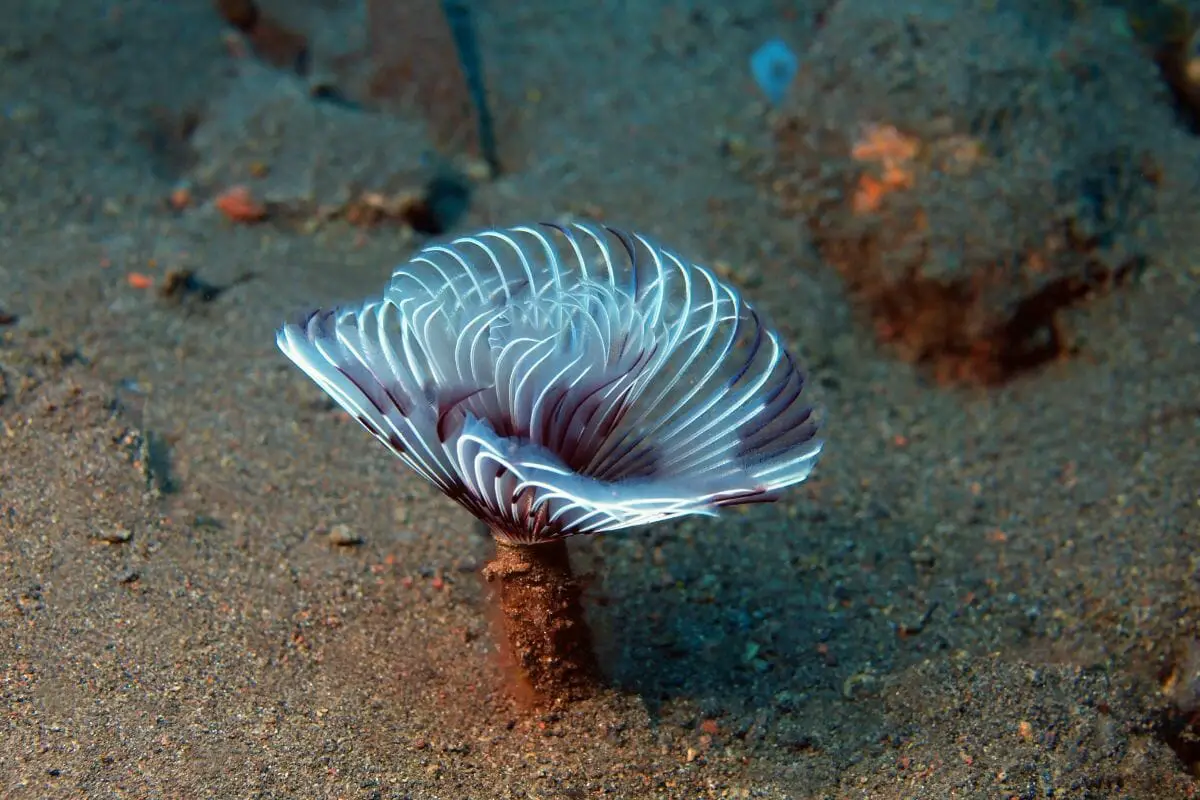
Pompeii Worm
These are similar to the Volcanic Tube worms; however, there are a few differences between the two.The biggest difference is that these Pompeii Worms are much more extreme than their counterparts.While the Volcanic Giant Tube worm lives by the volcanic hydrothermal vents, these extremophile animals live directly on top of these vents and can be found nowhere else on earth.They follow some of the same breathing patterns as tube worms such as absorbing CO2 and being unaffected by the surrounding elements; however, these worms do it much better.For one, they are extremely heat-tolerant and are considered one of the most tolerant complex creatures in the world, after the tardigrade, and can withstand temperatures to 105 degrees Celsius for a short time comfortably.Having also been discovered by humans 40 years ago, there is still little known about them, with only a dozen Pompeii worms recorded.This is mainly due to their extreme habitats. This makes them one of the strangest and most interesting species in the world.Vampire Ground Finch
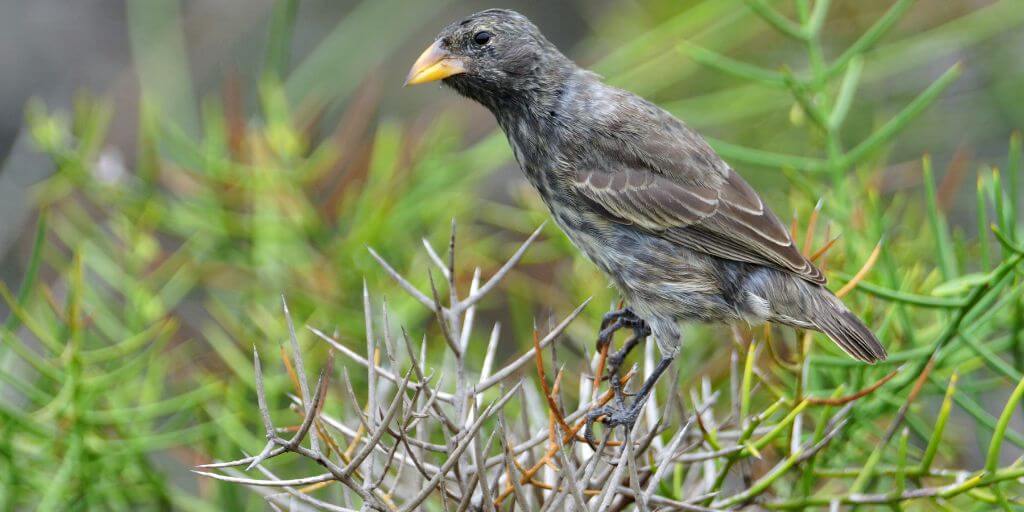 The vampire ground finch (Geospiza septentrionalis) is native to the Galápagos Islands, where it thrives on volcanic landscapes. Though it primarily feeds on seeds and insects, this finch has developed a distinctive behavior—drinking the blood of seabirds, particularly boobies.During dry seasons, when other food sources become limited, the finch uses its sharp beak to make small cuts on its host’s skin, feeding on the blood without causing serious injury. This adaptation helps it survive in challenging environments with scarce resources.The vampire ground finch contributes to its ecosystem by keeping insect populations in check and dispersing seeds. Its nesting habits involve using natural crevices in rocky volcanic terrains, showing its ability to adjust to harsh, arid landscapes.Though it does not reside inside volcanoes, its presence on volcanic islands illustrates how animals adapt to extreme environments for survival.
The vampire ground finch (Geospiza septentrionalis) is native to the Galápagos Islands, where it thrives on volcanic landscapes. Though it primarily feeds on seeds and insects, this finch has developed a distinctive behavior—drinking the blood of seabirds, particularly boobies.During dry seasons, when other food sources become limited, the finch uses its sharp beak to make small cuts on its host’s skin, feeding on the blood without causing serious injury. This adaptation helps it survive in challenging environments with scarce resources.The vampire ground finch contributes to its ecosystem by keeping insect populations in check and dispersing seeds. Its nesting habits involve using natural crevices in rocky volcanic terrains, showing its ability to adjust to harsh, arid landscapes.Though it does not reside inside volcanoes, its presence on volcanic islands illustrates how animals adapt to extreme environments for survival.Hawaiian Honeycreepers
Hawaiian honeycreepers represent a diverse bird group unique to the Hawaiian Islands, where volcanic activity shapes much of their habitat.These birds exhibit a wide variety of beak shapes, each adapted to a different food source, from nectar to seeds and insects. Depending on the species, honeycreepers live in areas ranging from rainforest canopies to dry volcanic slopes.Their specialized diets make them important for pollination and seed dispersal, helping maintain the ecological balance of their environment.Many honeycreeper species face risks from habitat degradation, invasive species, and diseases. Conservation projects aim to protect these birds by restoring native forests and controlling invasive threats.Though they do not inhabit volcano interiors, their adaptability to the volcanic landscapes of Hawaii highlights how life evolves around dynamic geological environments.Kamchatka Brown Bear
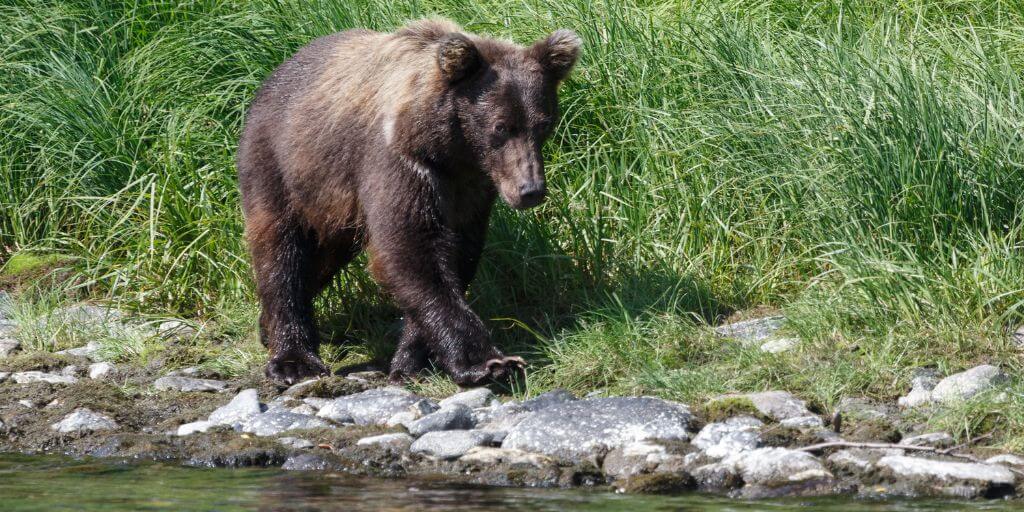 The Kamchatka brown bear (Ursus arctos beringianus) inhabits the rugged terrain of Russia’s Kamchatka Peninsula, a region known for its active volcanoes.These bears live in forests, river valleys, and coastal areas near volcanic sites, relying on diverse food sources such as salmon, berries, and nuts.Their proximity to volcanoes benefits them, as volcanic soil fosters lush vegetation, providing abundant forage during warmer months.These large bears contribute to their ecosystem by dispersing seeds and controlling prey populations, maintaining the health of the local food web.While they do not live within volcanic craters, the surrounding volcanic environment plays an essential role in shaping their habitat. Conservation efforts focus on reducing human-bear conflict and protecting the natural landscapes where these bears roam.
The Kamchatka brown bear (Ursus arctos beringianus) inhabits the rugged terrain of Russia’s Kamchatka Peninsula, a region known for its active volcanoes.These bears live in forests, river valleys, and coastal areas near volcanic sites, relying on diverse food sources such as salmon, berries, and nuts.Their proximity to volcanoes benefits them, as volcanic soil fosters lush vegetation, providing abundant forage during warmer months.These large bears contribute to their ecosystem by dispersing seeds and controlling prey populations, maintaining the health of the local food web.While they do not live within volcanic craters, the surrounding volcanic environment plays an essential role in shaping their habitat. Conservation efforts focus on reducing human-bear conflict and protecting the natural landscapes where these bears roam.Volcano Rabbit
The volcano rabbit (Romerolagus diazi) is one of the smallest rabbit species, found exclusively in the Trans-Mexican Volcanic Belt. It prefers high-altitude regions near active and dormant volcanoes such as Popocatépetl and Iztaccíhuatl, where pine forests and grasslands provide food and cover.This rabbit mainly eats grasses, herbs, and tender shoots, playing a key ecological role by promoting plant diversity through grazing. Its small size and shy nature make sightings rare, though it is essential for the health of these volcanic ecosystems.The species is under threat from habitat loss caused by expanding agriculture and urbanization. Conservation programs aim to restore damaged areas and enforce legal protections to support population recovery.Final Thoughts
A volcano is one of the most extreme environments in the world. As a result, it is one of the most difficult places for animals to live(see also: Animals That Live in Canada).Not only are you exposed to extreme heat and instability, but even the water and air are toxic to most animals.However, as listed above, these are just a few incredible animals that can survive these conditions and not only survive but thrive.Hopefully, this guide has provided you with everything you need to know about animals living in volcanoes.
Latest posts by Olivia Kepner (see all)
- What Should I Do If A Koala Bites Me? Safety Guide - 2024-05-30
- Are Kangaroos Born Without Hind Legs? A Fascinating Journey - 2024-05-30
- Animals That Look Like Squirrels - 2024-05-30

